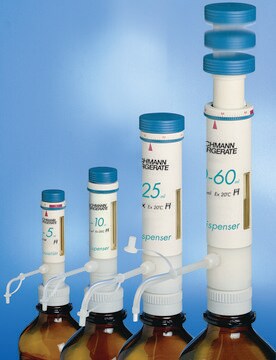Z359629
Bright-Line™ Hemacytometer
supplied with two cover slips
Synonyme(s) :
hemacytometers
About This Item
Produits recommandés
Matériaux
colorless
glass
Stérilité
non-sterile
Puits
2
Description générale
The ruled surface is 0.1mm below the cover glass, limiting the volume of blood or fluid over a square mm at 0.1cu.mm and over each of 400 squares (within the central square mm) to 0.00025 cu. mm. Contact of the flat, polished cover glass surfaces with cover glass supports produces an exact volume of fluid over the counting area. The difference in surface tension characteristics between the metallic surface on the chamber and the polished cover glass assures smooth capillarity for precise loading and more even cell distribution.
Replacement cover slips sold separately: Z375357
Application
Informations légales
En option
Certificats d'analyse (COA)
Recherchez un Certificats d'analyse (COA) en saisissant le numéro de lot du produit. Les numéros de lot figurent sur l'étiquette du produit après les mots "Lot" ou "Batch".
Déjà en possession de ce produit ?
Retrouvez la documentation relative aux produits que vous avez récemment achetés dans la Bibliothèque de documents.
Les clients ont également consulté
Articles
Cell based assays for cell proliferation (BrdU, MTT, WST1), cell viability and cytotoxicity experiments for applications in cancer, neuroscience and stem cell research.
Tests sur cellules pour l'étude de la prolifération (BrdU, MTT, WST1), de la viabilité et de la toxicité cellulaires pour la recherche sur le cancer, la recherche en neurosciences et la recherche sur cellules souches.
Protocoles
Cell culture protocol for high cell viability freezing using cryopreservation reagents like DMSO. Free handbook download.
Notre équipe de scientifiques dispose d'une expérience dans tous les secteurs de la recherche, notamment en sciences de la vie, science des matériaux, synthèse chimique, chromatographie, analyse et dans de nombreux autres domaines..
Contacter notre Service technique











